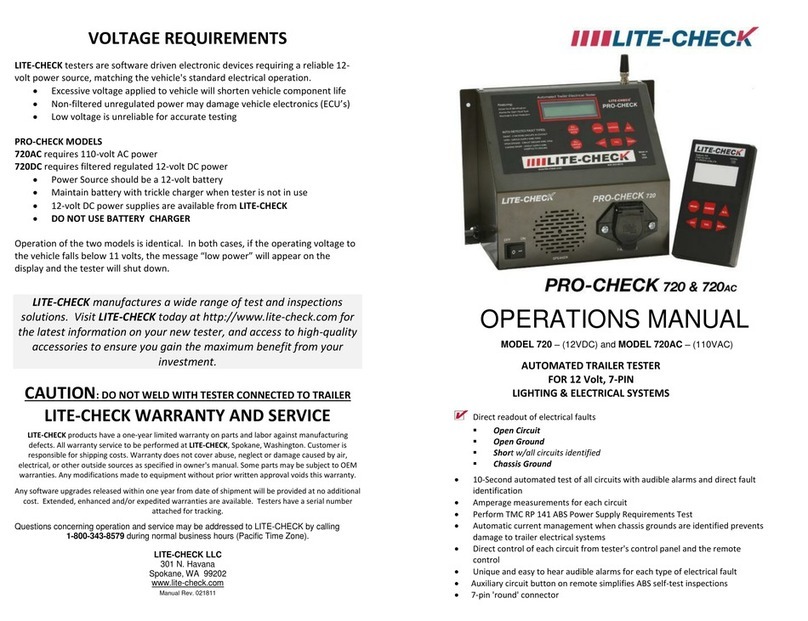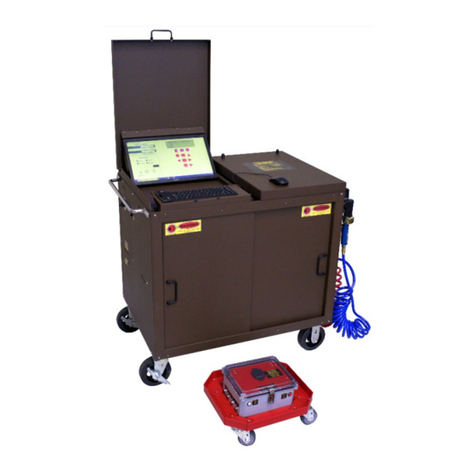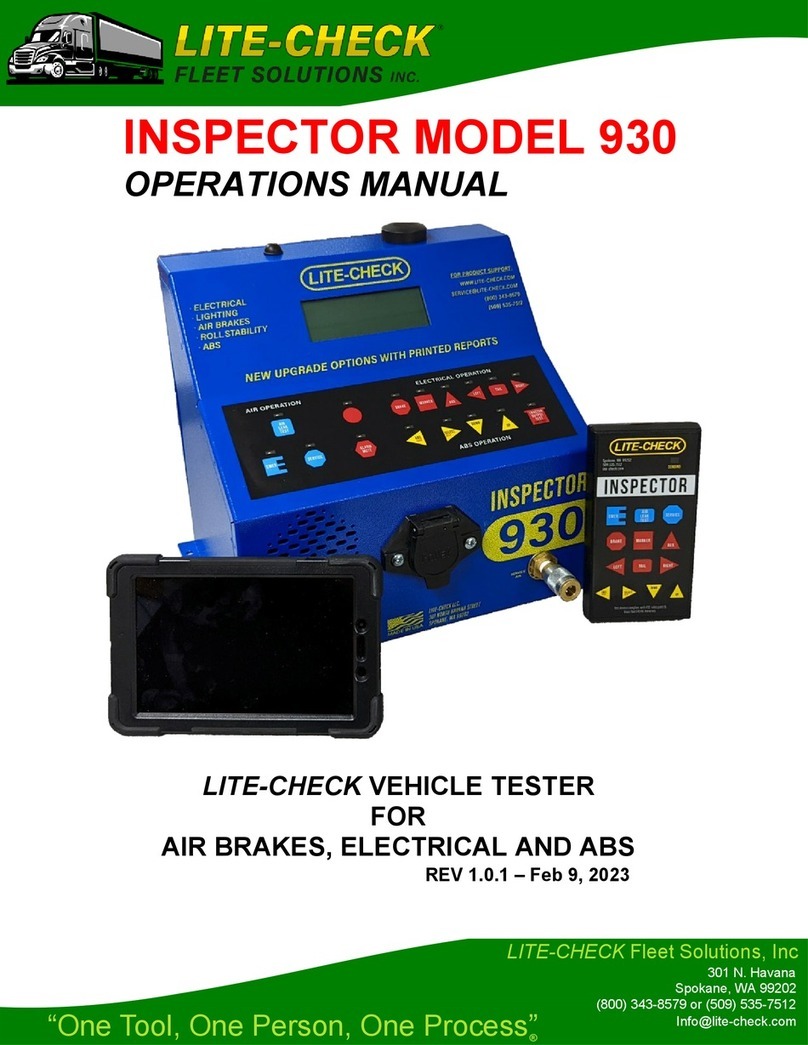
LITE-CHECK INSPECTOR 920
Page: 5 of 36
Overview....................................................................................................................20
Electrical Testing .......................................................................................................20
Circuit Condition Messages.......................................................................................21
ABS Test Procedures..................................................................................................22
Initial Setup and Configuration...................................................................................22
Trailer ABS Power Supply Requirements..................................................................22
ABS Operation...........................................................................................................23
Main Menu.................................................................................................................24
Viewing Active Faults.................................................................................................24
Viewing Stored Faults................................................................................................25
Clearing Active and Stored Faults .............................................................................25
Mileage......................................................................................................................25
ECU Voltage..............................................................................................................25
Manufacturer’s Configuration.....................................................................................26
Serial Number............................................................................................................26
Special Functions ......................................................................................................26
Getting Help...............................................................................................................26
ABS Fault Identification and Troubleshooting............................................................27
Tractor Testing............................................................................................................27
Electrical Output Test ................................................................................................28
Battery/Alternator Test...............................................................................................28
Air Output Test ..........................................................................................................28
Appendix......................................................................................................................29
ABS Button Codes.....................................................................................................29
Definition of Terms.....................................................................................................32
Accessories...............................................................................................................33
































